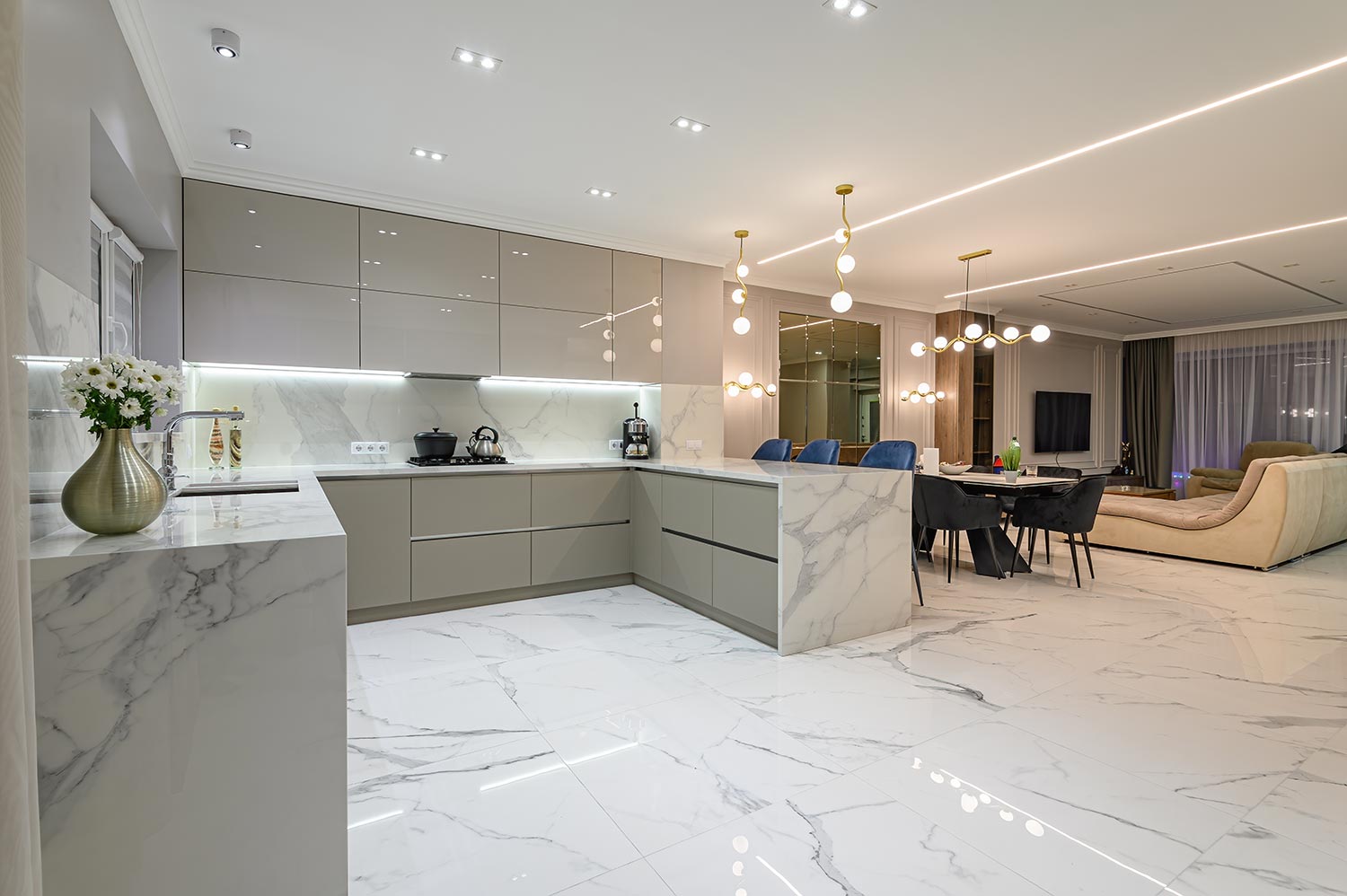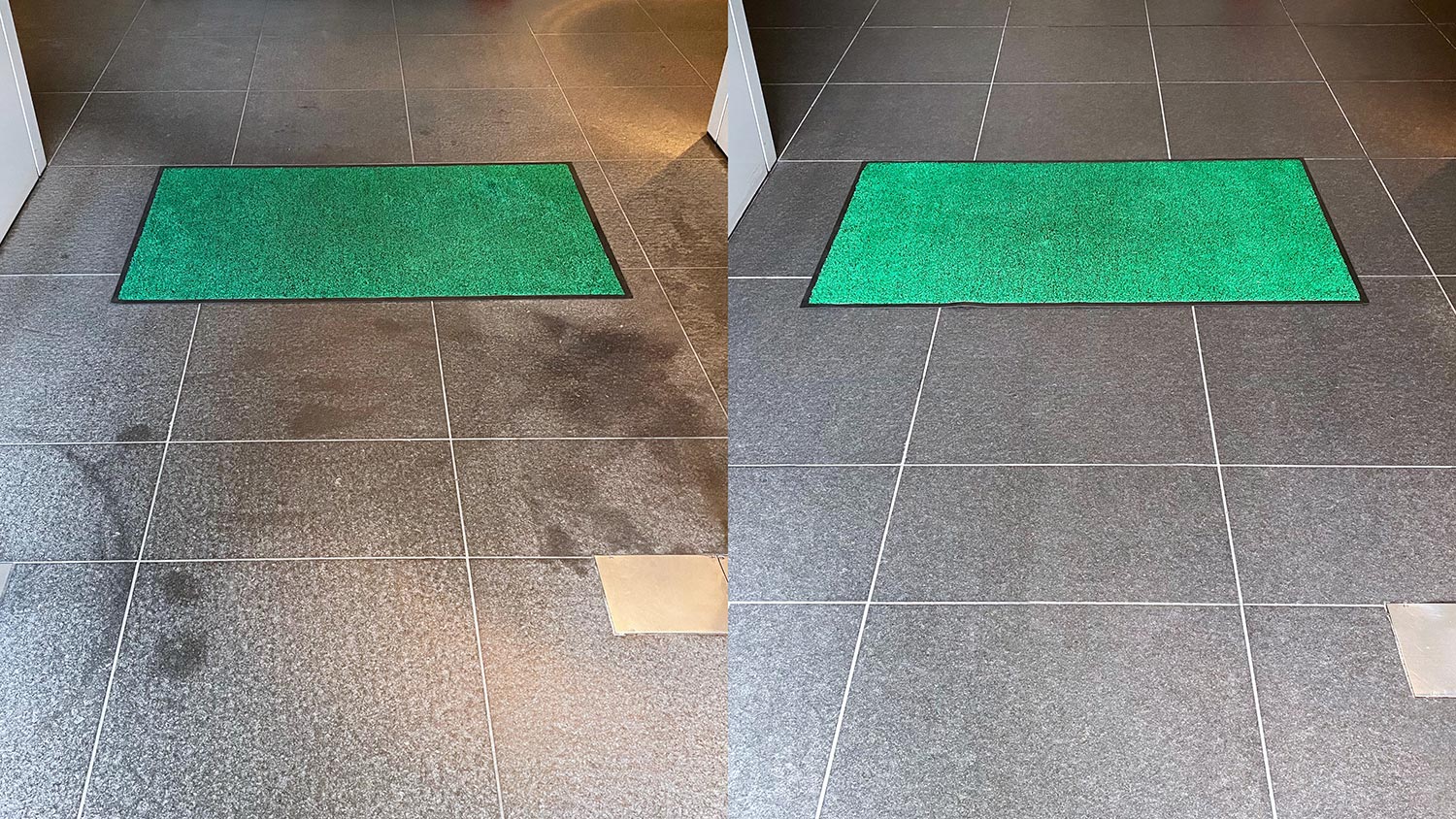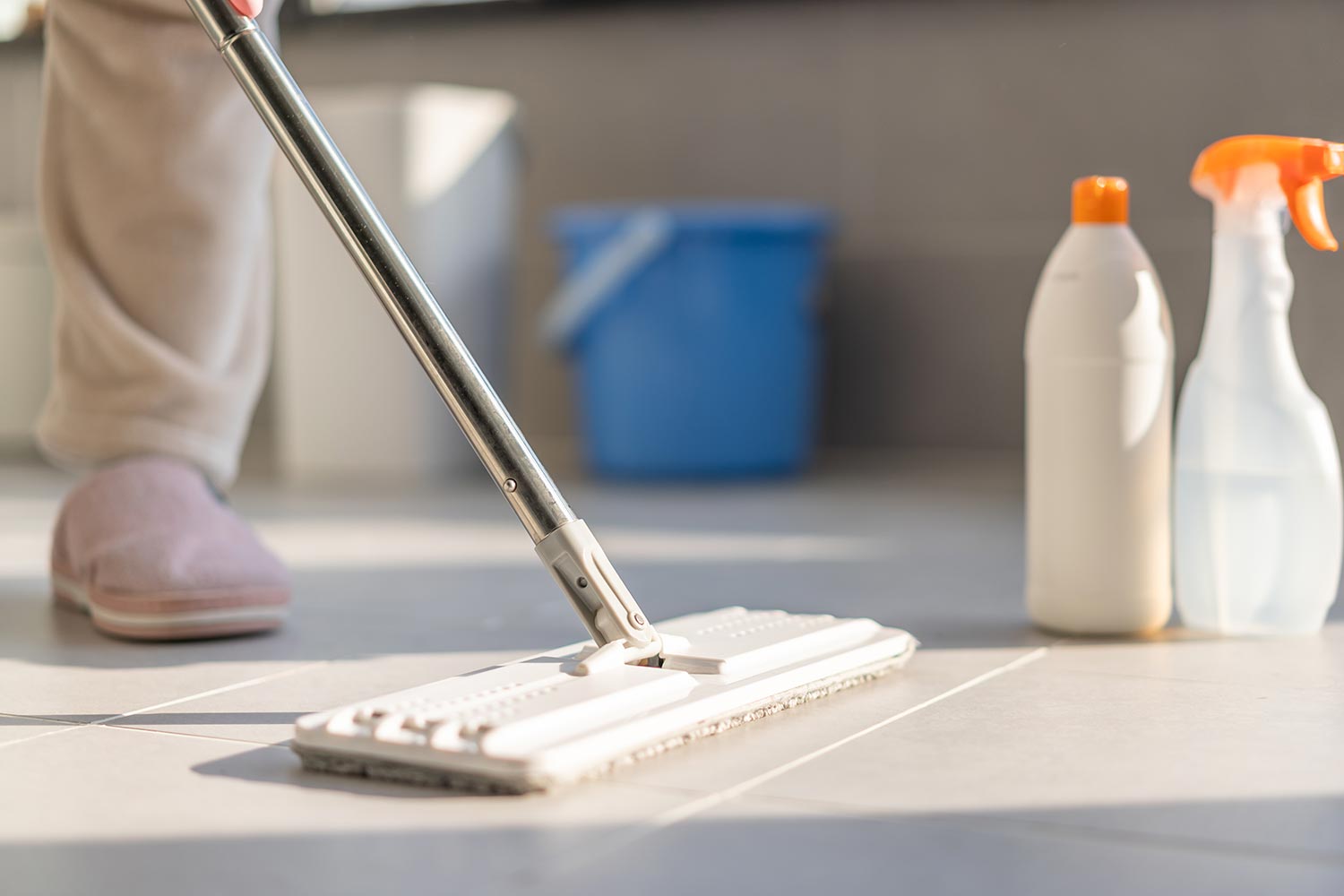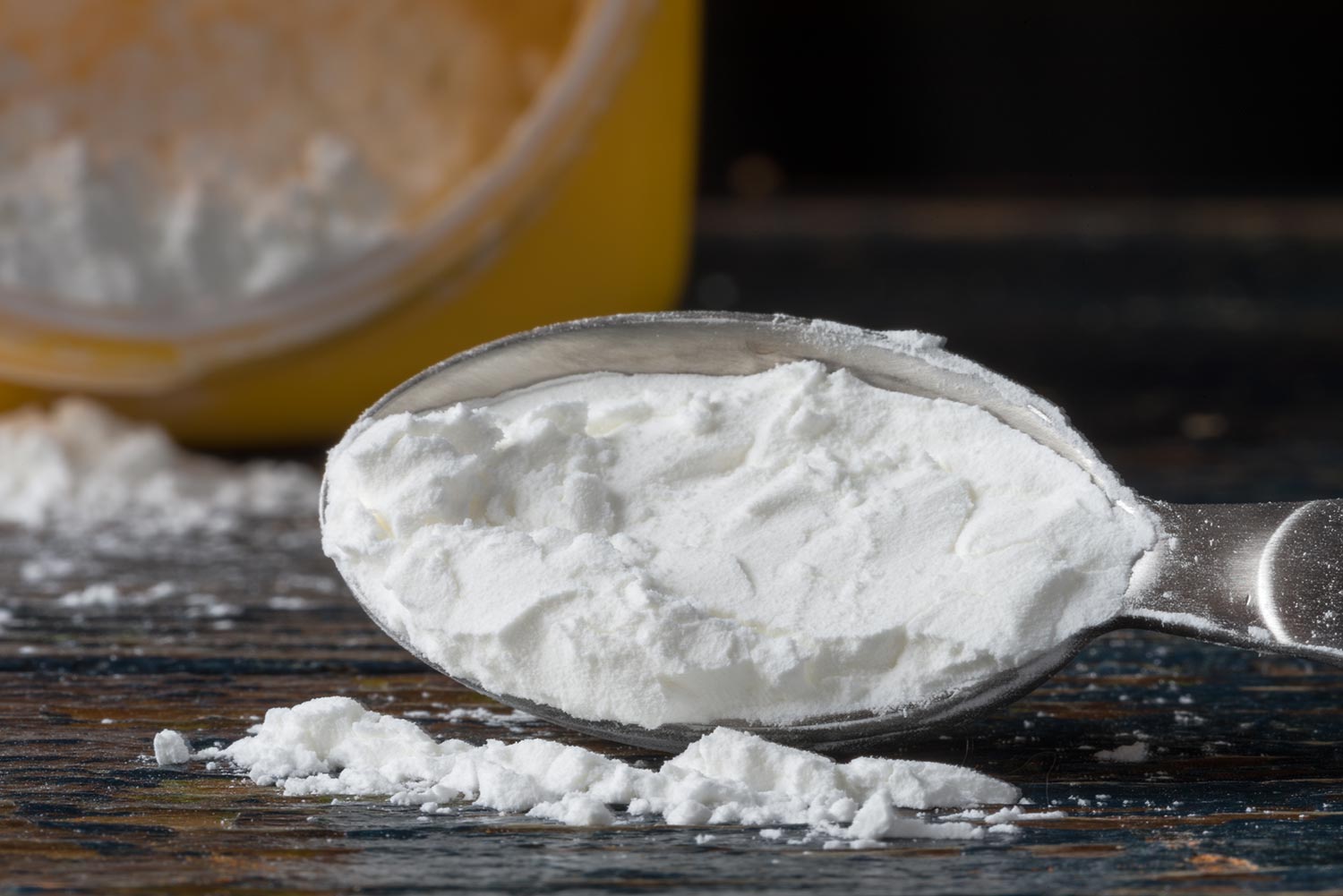If your home has marble floors, you know how nice it is to have clean and shiny floors. Marble is durable, but it can obtain damage if you don't clean and polish it as needed. We have performed thorough research on how to restore the shine of marble floors and how to clean them.
To polish and make your marble floors shiny, you must create a paste by mixing baking soda and water. Spread the paste all over the floor and let it dry. Once the paste finishes drying on your marble floors, remove the residue using a clean, soft cloth and water.
Polishing your marble floors is not the only thing you should do. You have to clean it first before doing the polishing process so that you can achieve the shine restoration you desire. And that is what we will tackle below; everything about cleaning marble floors. So, please read on and enjoy reading!

How To Polish Marble Floors?
We don't suggest using polish on marble floors since it can damage the surface and make it dangerously slippery, especially since marble is very smooth. Instead, it would be best to use a chamois cloth or clean, dry towel to eliminate the water or cleaning solution residues from your marble floor.
We sometimes add affiliate links and content that was curated and created by our team with the help of advanced ai tools to help showcase the best design styles.

As mentioned earlier, you can use a mixture of baking soda and water to create a paste and apply it all over your marble floors if you want to achieve a great shine. Let it dry, and then remove all the residues with a soft cloth and water.
What Are The Best Materials To Clean Marble?
If you want to keep your marble floors free from scratches and always looking clean, you should avoid anything sharp and rough that can affect the surface.
It would be best to only use soft materials like dust mops and chamois cloths. Soft materials are far better than using abrasive sponges and brushes. Additionally, we don't recommend using dry erasers because they can scrape the marble's surfaces rather than cleaning them.
Furthermore, it would be best not to try using acidic cleaning solutions on your marble floors, such as lemon juice, vinegar, or others. Instead, use alkali cleaners like hydrogen peroxide, ammonia, or tepid water. Using alkali cleaners will prevent the marble floors from oxidizing or reacting.
How To Clean Marble Floors?

Of course, if you want to restore the shine on your marble floor, you must clean them thoroughly first. Follow the guidelines below to achieve beautiful and clean marble floors.
1. Sweep to Remove Loose Dirt
Prepare the floor by gently sweeping off the dust and dirt to avoid scratching and damaging the surface.
2. Mop the Floor
Mop the floor to eliminate the remaining traces of dirt and dust. You can utilize water for this step, but if you want to clean it better, you can use any non-acidic cleaning solution. Change the water if you notice discoloration. It would be best to use clean water again to avoid spreading the dirt on the entire marble floor.
Use a Non-acidic Cleaning Solution
To clean your marble floors, always remember that it would be best to use non-acidic cleaning solutions to prevent damaging them.
Ammonia, for example, is an excellent cleaning solution for your marble floor. However, when using ammonia, you must ensure that the area has proper ventilation because it has a strong odor.
Don't Soak the Floor in Cleaning Solution
Do not use a cleaning solution to soak the marble. Rinse it immediately after scouring the stains or dirt. But before mopping or wiping the floor, scrape out any excess liquid. When you're done, wipe down the floor with a soft cloth to avoid leaving water marks or rust stains, which can occur when marble containing iron oxide come to touch with water.
What Are The DIY Marble Floor Cleaners

If you don't want to spend extra money on purchasing marble floor cleaners, you can use some household supplies to clean your floors.
Soap and Water
Your dishwashing soap can make good use in cleaning your marble floors. Mix it with water to create a solution and avoid streaks. After that, you should buff the floor gently, allowing it to dry and eliminate the residues.
2Hydrogen Peroxide
Hydrogen peroxide is an excellent solution to clean your light marble floors, mainly if they contain tough stains. However, it would be best to test an area first if you have a dark marble floor because hydrogen peroxide can discolor it.
This cleaning solution is best for water-based stains such as fruit juice and washable marker or organic stains.
Check out this Lysol hydrogen peroxide on Amazon.
Acetone

You can find acetone in nail polish removers, which have almost the same cleaning properties like hydrogen peroxide. The advantage of acetone from hydrogen peroxide is that it doesn't discolor dark marble floors.
To use this, get a cotton ball, dip it in acetone, and rub it on the areas with stains. After that, wash it with an ample amount of water.
Check out this acetone on Amazon.
Cornstarch

The most significant advantage of using cornstarch is its capacity to absorb liquids. Cornstarch is a way to go if you have spilled coffee or oil on your marble floors and it is hard to remove. Cover the area with it and let it sit overnight.
You will notice the following day that the cornstarch has drawn out the liquid from your marble floors. Furthermore, you have to wash the floor with water.
Ammonia
Ammonia is most likely the most potent household cleaning solution we can suggest for your marble floors before you opt to call professionals to help you clean. When using it, we highly recommend diluting it with water, and it would be best to ensure that the area is well-ventilated. To make the cleaning solution, you should dilute 1/2-cup of ammonia in a gallon of water.
Check out this Ammonia cleaning solution on Amazon.
How To Identify The Stains On Marble Floor?
Every stain that can appear on your marble floors responds to various solutions. Below are the most typical stains and the suitable cleaning solutions to use.
1. Oil-based Stains
You can obtain oil stains on your marble floor from spilling cooking oil, dropping your lipgloss or lipstick, or stepping in engine oil. These stains on the marble typically appear as dull, dark splotches that penetrate deep into the floor. And you must draw out the stains to get rid of them.
Cleaners to use:
- Cornstarch- to absorb as much oil as you can
- Dish soap with water- to eliminate fresh spills
- Hydrogen peroxide- for light marble
- Acetone- for dark marble
2. Ink Stains
We may consider ink stains one of the toughest stains to remove from marble floors. It can blot up immediately on the marble after you spill it.
Cleaners to use:
- Dish soap with water- to eliminate fresh spills
- A cloth that is soaked with isopropyl alcohol- to absorb the ink
- Ammonia- to remove the final stain
3. Organic Stains
Don't freak out if your dog pees on your marble floor or your youngsters spill a glass of orange juice. All you have to do is as soon as possible, blot up as much of the liquid as you can. Don't try to rub the stain on the marble floor because it might spread or force itself deep into the stone.
Cleaner to use:
- Ammonia or hydrogen peroxide- to loosen the stain up and remove it
4. Biological Stains
If you keep potted plants on your marble floor, you might detect lichens, algae, mosses, and other greenery developing where they shouldn't be. Unfortunately, plants can stain your marble floors, so vacate them carefully and clean the area.
Relocate the plants and reduce the humidity level in the area where your green invaders were developing to help safeguard your marble floor.
Cleaner to use:
- Hydrogen peroxide or acetone- to loosen up the biological matter and discourage new growth
5. Metallic Stains
Some marbles hold metals that can produce stains on the surface of your floor because it consists of various elements. Marble contains copper, iron, and bronze, which can smudge if they acquire moisture. To spot them, look for patches that are reddish-brown or green.
Unfortunately, metallic stains are the hardest to eliminate because they are embedded in the marble. You can lessen them but not remove them.
Cleaner to use:
- Baking soda or ammonia- to lessen the appearance of stains
6. Clouded Residue or Water Spots
The most typical stains on marble floors are cleaning solution smudges or watermarks.
Cleaner to use:
- Chamois- use this to buff the surface of the marble so that you can remove the water spots or filmy residue. It would be best to make a circular motion to achieve a better result.
In Conclusion

Marble floor is challenging to clean, but by being cautious about the cleaning solutions you utilize, you can maintain your marble floors shiny, clean, and protected for years without spending too much on cleaners and materials.
If you find this post helpful, please leave a comment below and let us know what your additional concerns are, and we'd love to write another article for you! You might also want to check these posts below for immediate help and advice:
How To Protect Floor Around Toilet
How To Clean Dust Off Walls After Floor Sanding [4 Easy Methods!]



